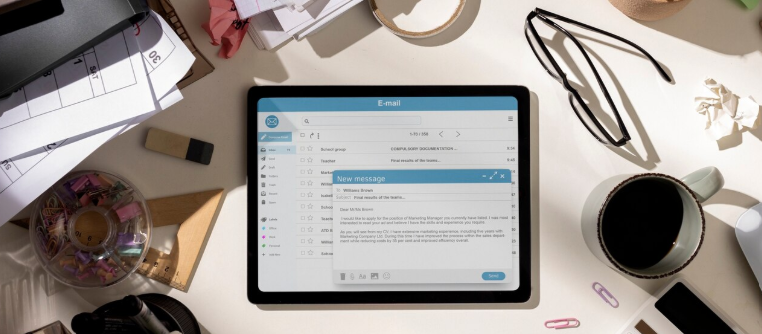Mengelola bisnis dengan baik memerlukan pemahaman yang mendalam tentang proyeksi keuangan, terutama dalam hal pendapatan. Melakukan simulasi pendapatan yang tepat bisa membantu Anda membuat keputusan strategis, mempersiapkan pertumbuhan, dan menghindari potensi masalah keuangan. Namun, simulasi pendapatan bukan sekadar menghitung angka, melainkan memerlukan teknik yang benar agar hasilnya akurat dan dapat diandalkan. Bagaimana cara melakukan simulasi pendapatan dengan tepat? Berikut adalah beberapa langkah kunci yang harus Anda perhatikan.
1. Analisis Data Historis
Langkah pertama dalam melakukan simulasi pendapatan yang akurat adalah dengan menganalisis data historis. Data ini mencakup penjualan, pendapatan, dan tren dari periode sebelumnya. Informasi ini akan memberikan gambaran mengenai bagaimana bisnis Anda telah beroperasi dan membantu dalam membuat proyeksi yang lebih realistis di masa mendatang. Jika Anda memiliki data yang terstruktur dengan baik, Anda dapat menganalisis pola pertumbuhan dan melihat tren musiman yang memengaruhi pendapatan.
2. Menggunakan Faktor Eksternal dalam Proyeksi
Ketika melakukan simulasi pendapatan, penting untuk memperhitungkan faktor eksternal yang mungkin memengaruhi bisnis Anda. Faktor-faktor ini bisa mencakup perubahan ekonomi, pergeseran pasar, tren konsumen, atau bahkan regulasi pemerintah yang baru. Mengabaikan faktor eksternal bisa membuat simulasi pendapatan Anda tidak akurat, sehingga penting untuk selalu up-to-date dengan perkembangan pasar yang relevan dengan bisnis Anda.
3. Membuat Berbagai Skenario
Salah satu cara terbaik untuk melakukan simulasi pendapatan adalah dengan membuat berbagai skenario baik skenario optimistis, realistis, maupun pesimistis. Ini memungkinkan Anda untuk mempersiapkan berbagai kemungkinan yang mungkin terjadi di masa depan. Dengan skenario ini, Anda bisa memahami bagaimana berbagai faktor, seperti perubahan harga, peningkatan biaya, atau fluktuasi penjualan, dapat memengaruhi pendapatan Anda. Cara ini membantu Anda mengambil keputusan yang lebih bijaksana berdasarkan hasil simulasi.
4. Mempertimbangkan Faktor Musiman
Banyak bisnis mengalami fluktuasi pendapatan yang signifikan selama waktu-waktu tertentu dalam setahun. Misalnya, bisnis ritel sering mengalami lonjakan penjualan selama musim liburan, sementara bisnis lain mungkin mengalami penurunan permintaan pada periode tertentu. Penting untuk mempertimbangkan faktor musiman dalam simulasi pendapatan Anda agar proyeksi lebih akurat. Dengan cara ini, Anda bisa lebih siap dalam merencanakan pengelolaan persediaan dan sumber daya saat menghadapi perubahan musiman tersebut.
5. Melibatkan Biaya dan Margin Keuntungan
Simulasi pendapatan yang tepat tidak hanya mempertimbangkan total penjualan, tetapi juga harus mempertimbangkan biaya operasional dan margin keuntungan. Setelah Anda memproyeksikan pendapatan, pastikan Anda memperhitungkan biaya tetap dan variabel, termasuk biaya bahan baku, tenaga kerja, dan overhead. Memahami margin keuntungan yang realistis sangat penting untuk menilai apakah proyeksi pendapatan tersebut akan menghasilkan profit yang memadai bagi bisnis Anda.
6. Gunakan Software dan Alat Analitik
Mengecek simulasi pendapatan secara manual bisa sangat memakan waktu dan rawan kesalahan. Oleh karena itu, banyak perusahaan kini beralih ke software dan alat analitik keuangan yang bisa membantu melakukan proyeksi dengan lebih mudah dan akurat. Software ini tidak hanya mampu mengelola data besar, tetapi juga dapat menghasilkan laporan yang memberikan wawasan yang lebih mendalam tentang kinerja bisnis Anda. Dengan bantuan teknologi, simulasi pendapatan bisa dilakukan secara lebih efisien dan akurat.
7. Review dan Koreksi Secara Berkala
Simulasi pendapatan bukanlah sesuatu yang dilakukan sekali dan langsung selesai. Sebaliknya, simulasi ini harus direview dan dikoreksi secara berkala. Setiap perubahan dalam strategi bisnis, kondisi pasar, atau data penjualan baru harus segera diperbarui dalam simulasi. Dengan melakukan penyesuaian secara rutin, Anda dapat memastikan bahwa simulasi pendapatan tetap akurat dan sesuai dengan kondisi terkini.
Ingin memastikan simulasi pendapatan bisnis Anda akurat dan tepat sasaran? Hubungi Thrive sekarang untuk mendapatkan solusi keuangan terbaik yang akan membantu Anda membuat proyeksi pendapatan secara profesional dan memaksimalkan keuntungan bisnis Anda!




























 Industrial Robotics Integration
Industrial Robotics Integration
 IT Outsourcing Service
IT Outsourcing Service
 Secure Internet SD-WAN Connection
Secure Internet SD-WAN Connection
 Digital Marketing Service
Digital Marketing Service









